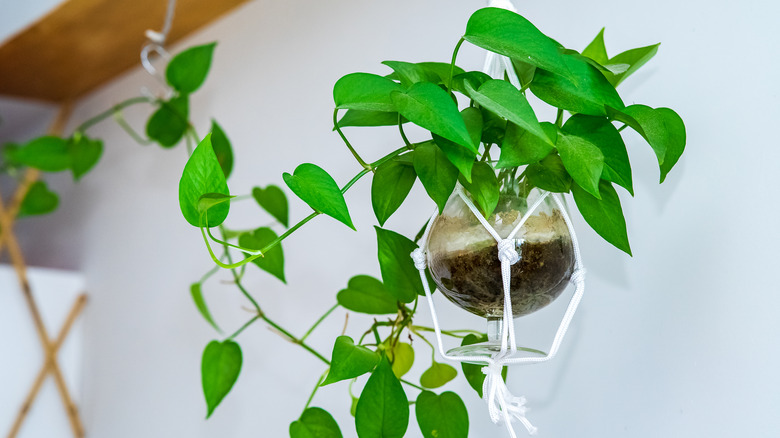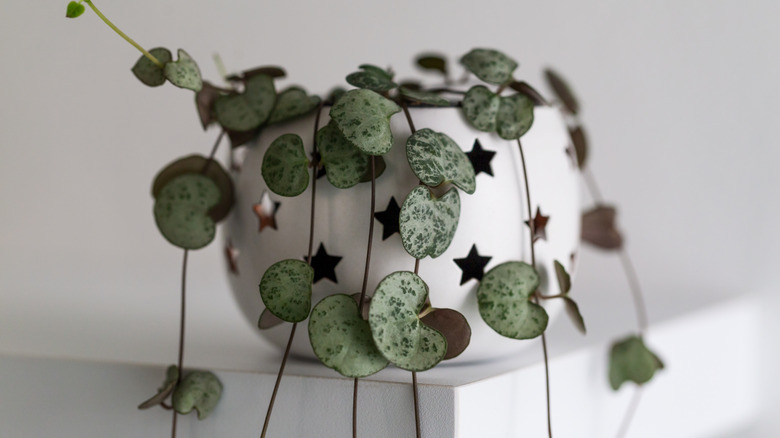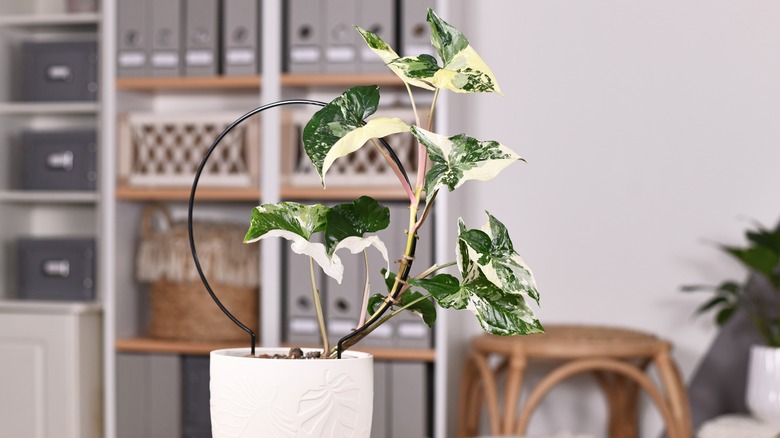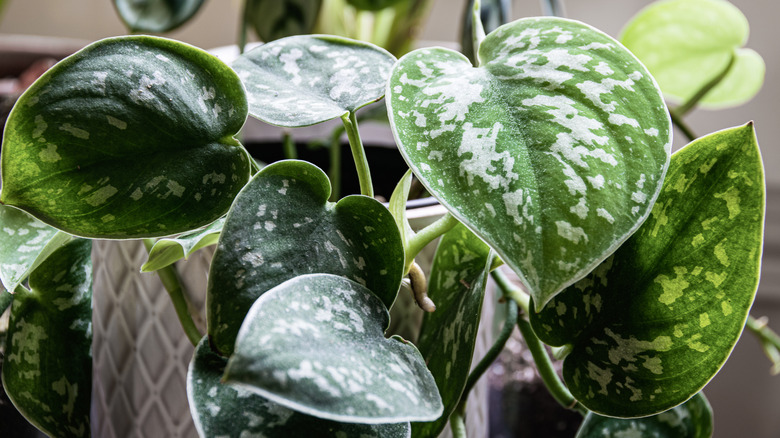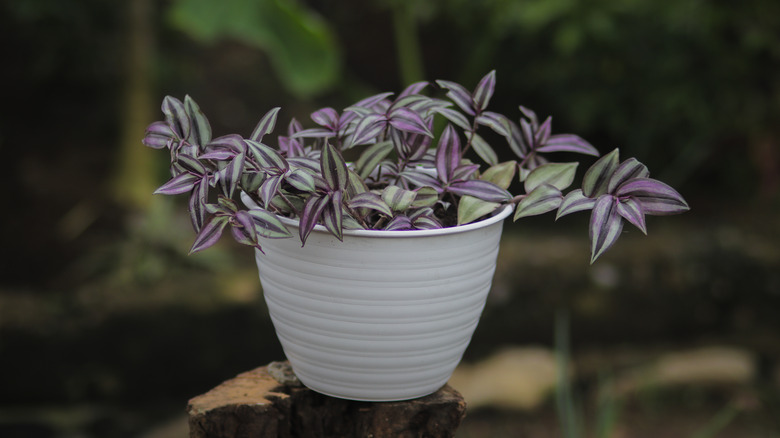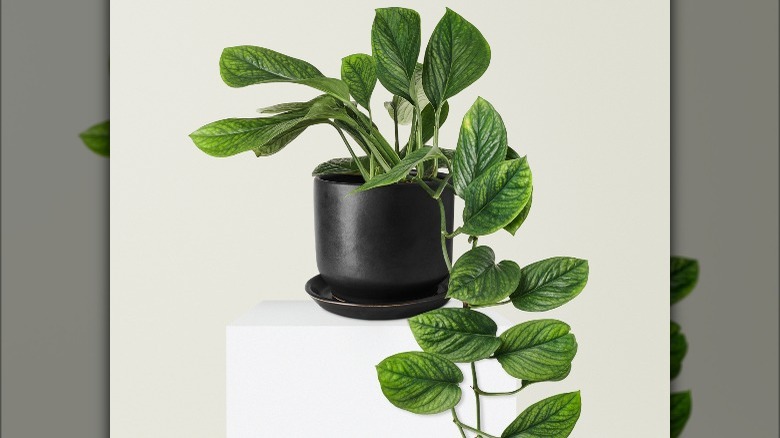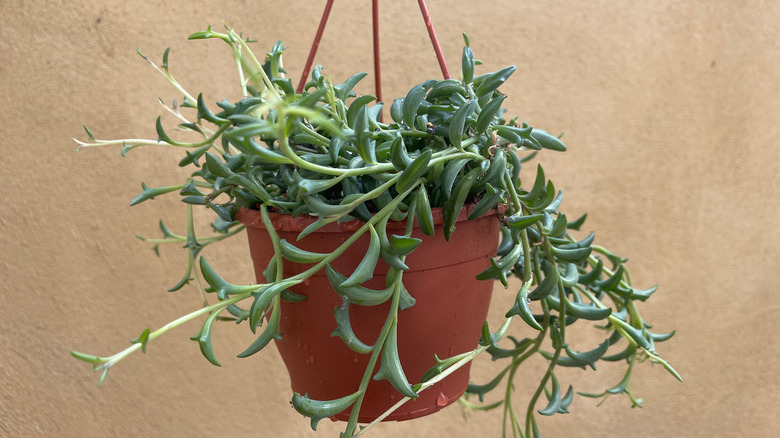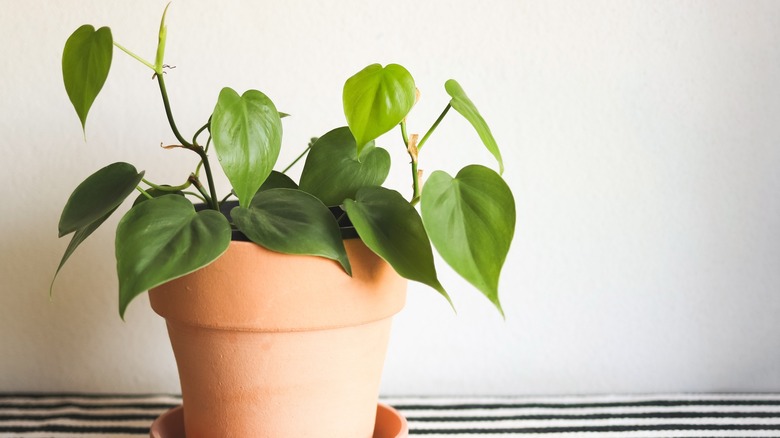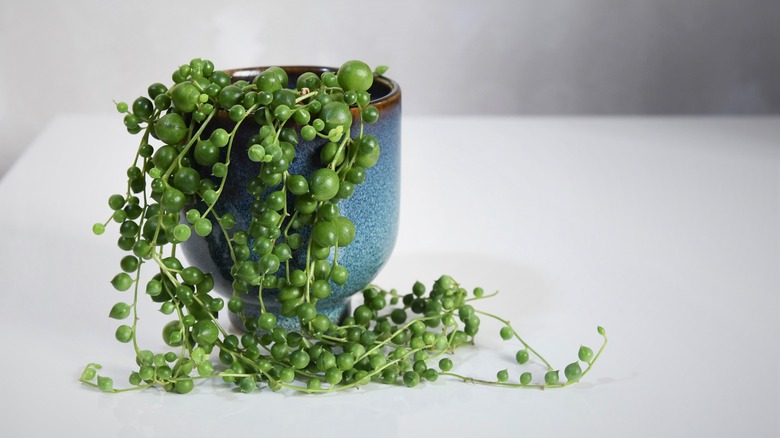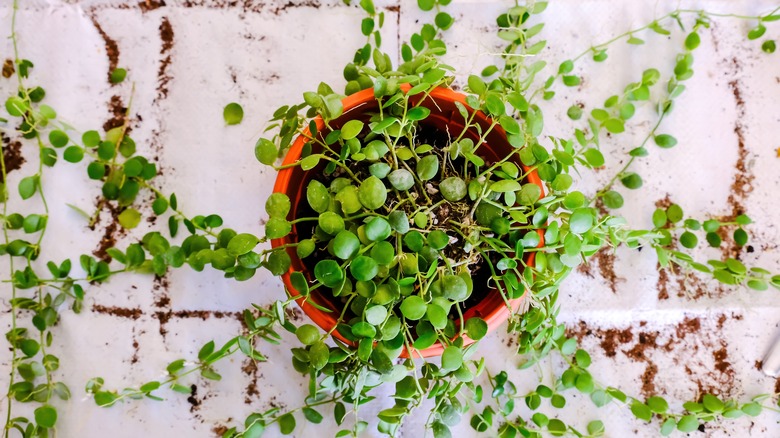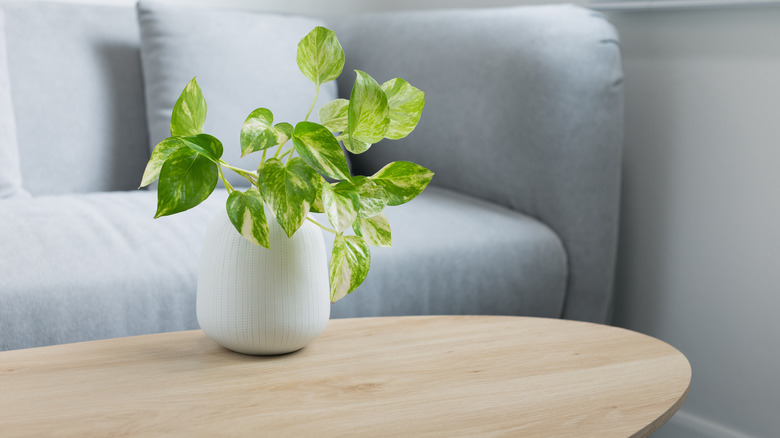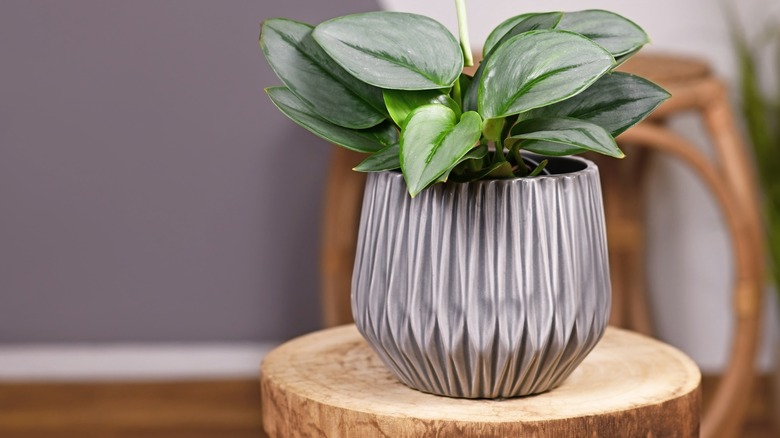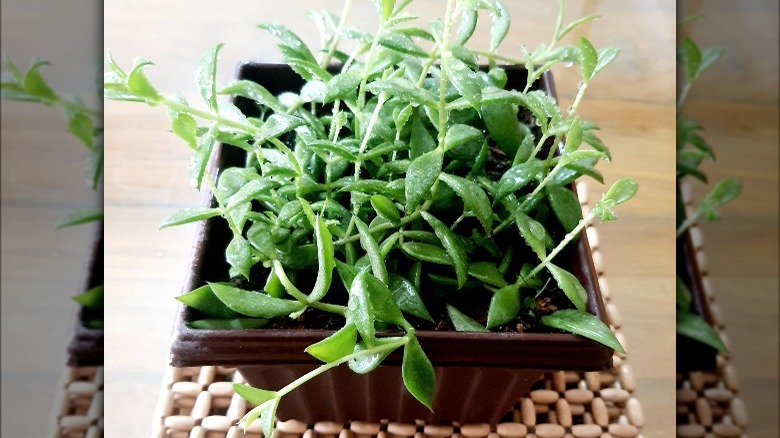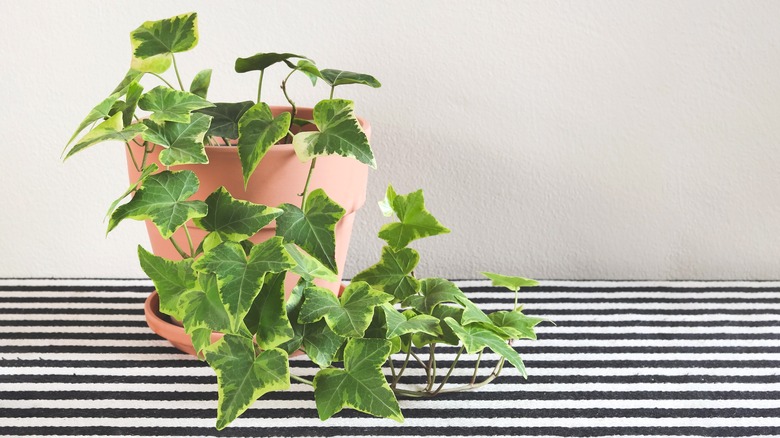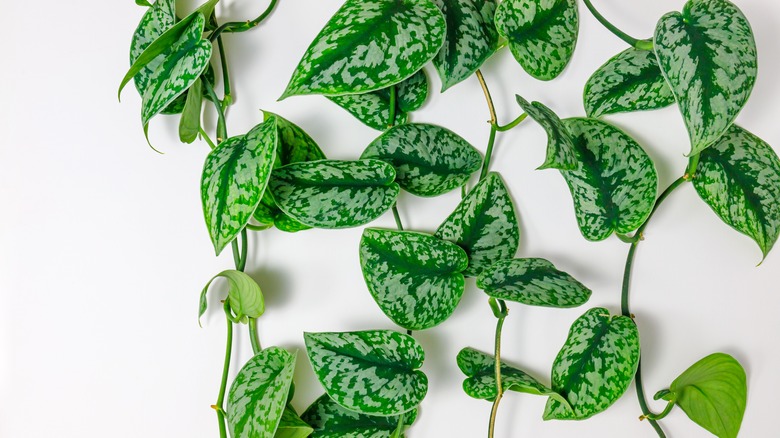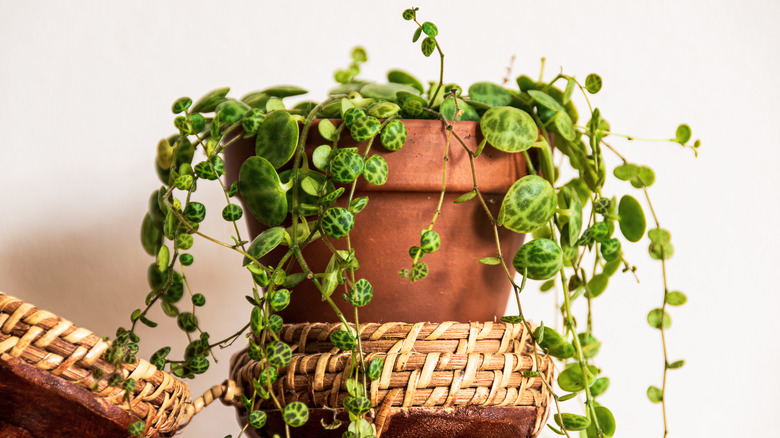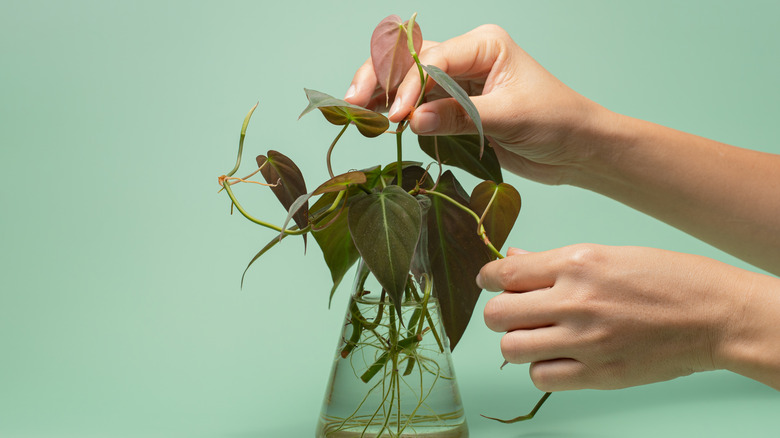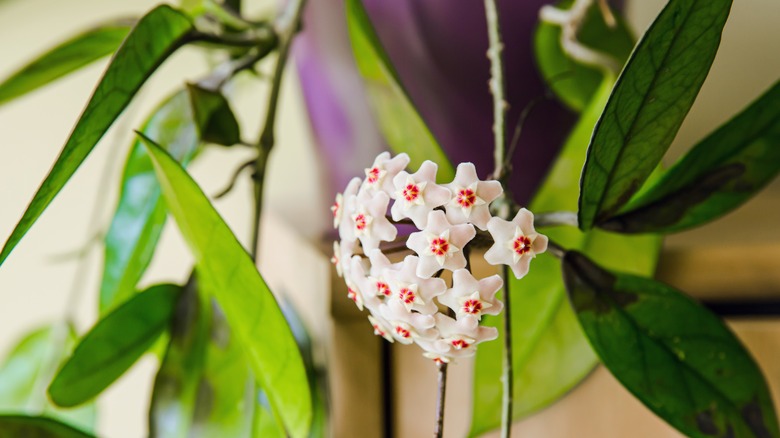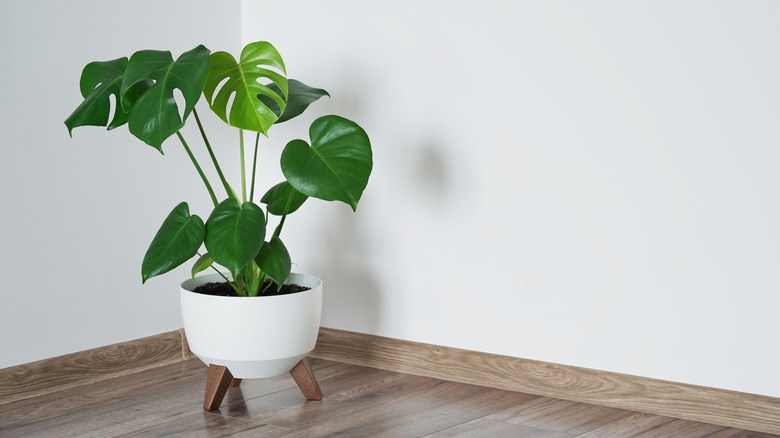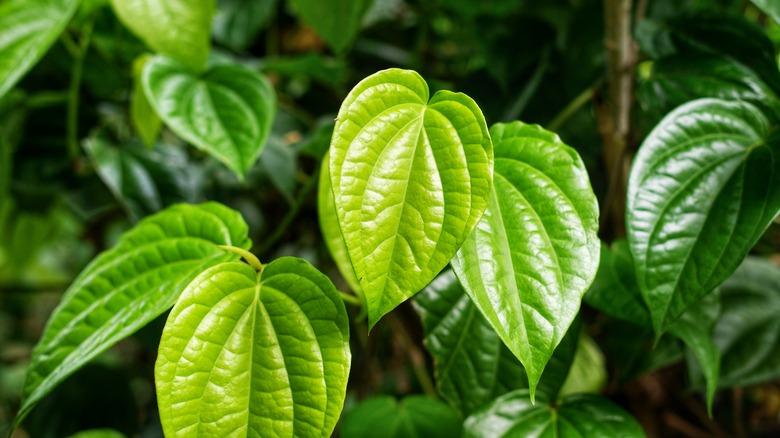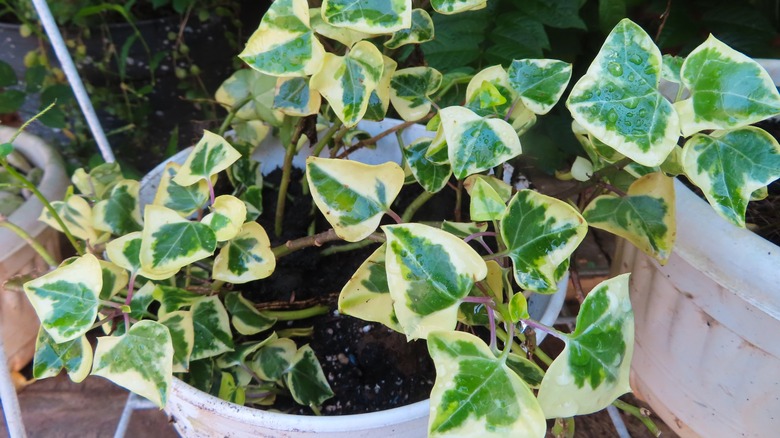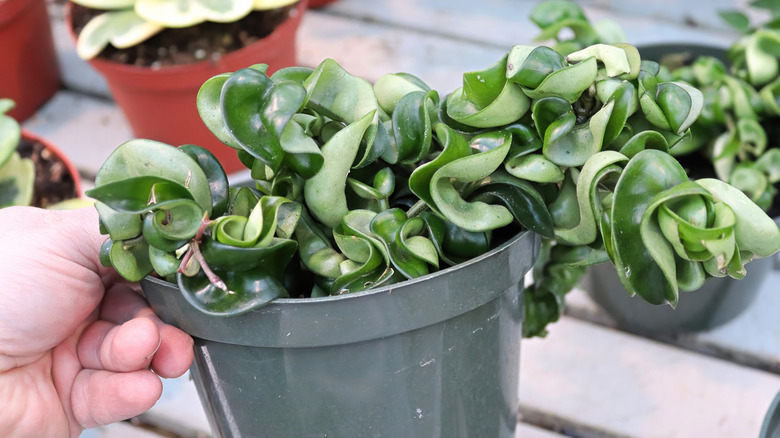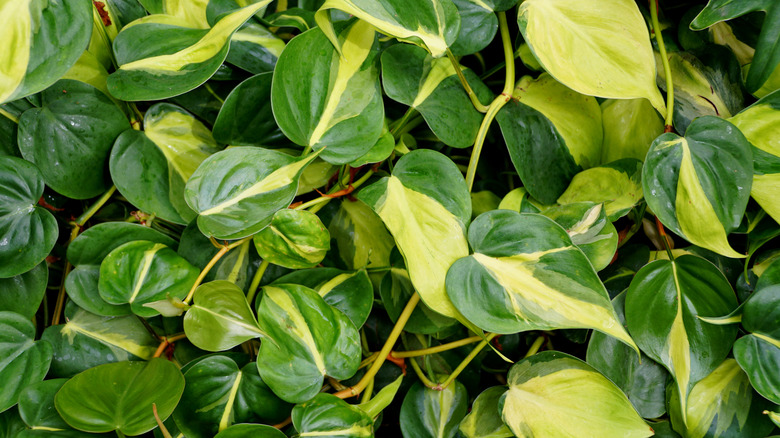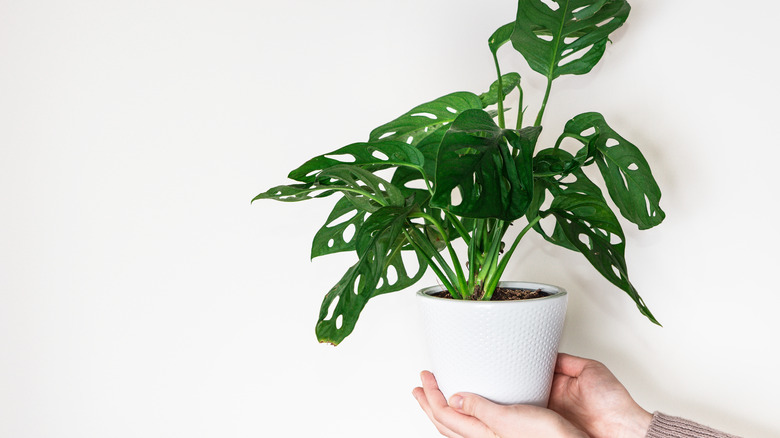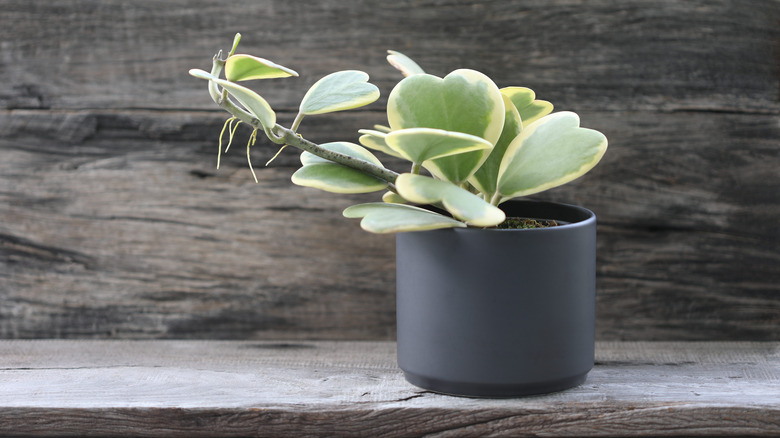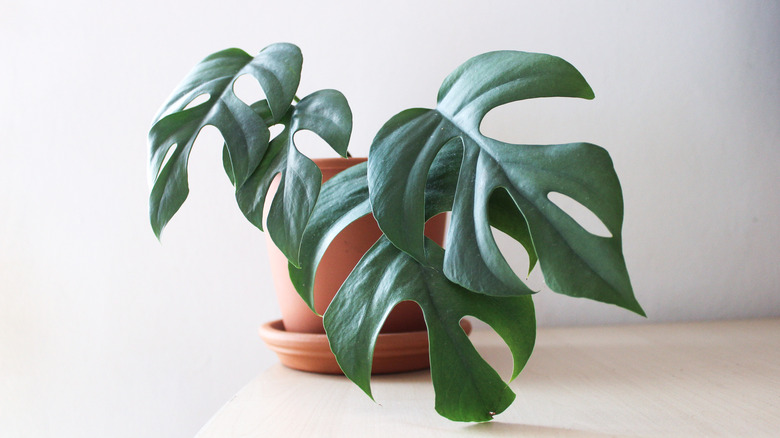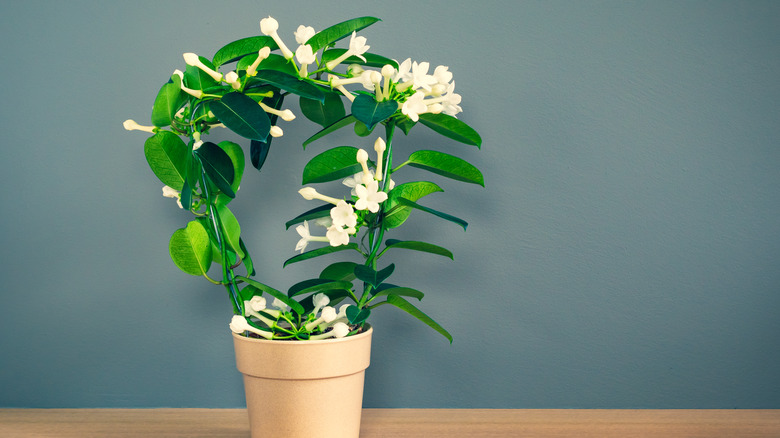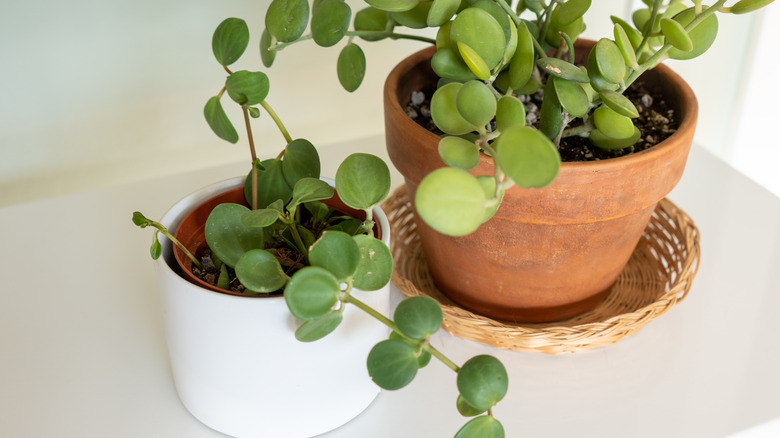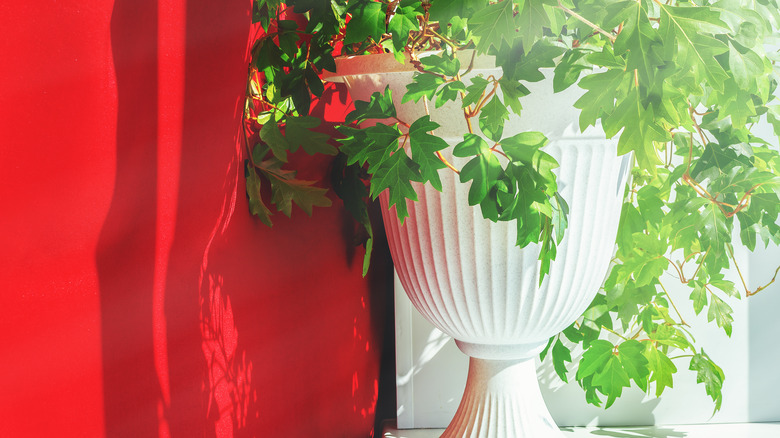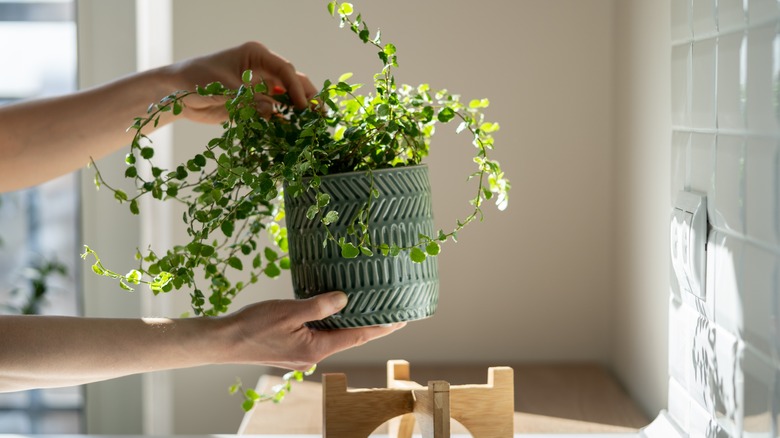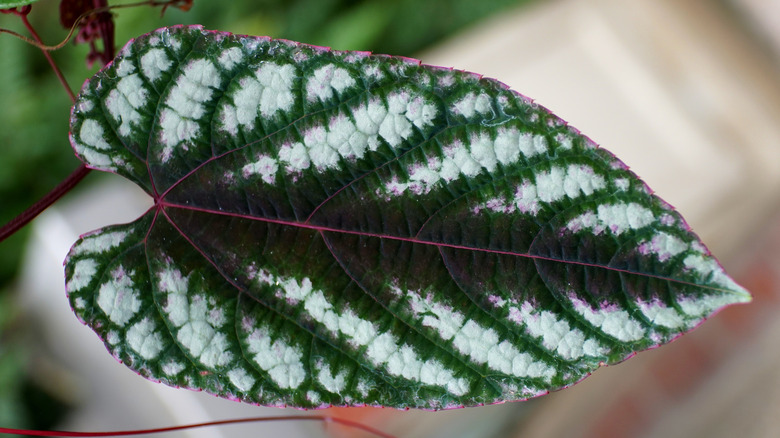30 Vining Plants That Will Give Your Indoor Space A Fresh Look
Those who like to decorate their homes with living plants know how valuable a vining species can be to fill up space and keep things looking fresh. Yet, what they might not know is how many options they have to choose from. As beginner houseplant owners, we go for the most popular plants that are touted as the easiest to grow, and oftentimes we won't stray from the classics.
This isn't to say that traditional vining houseplants such as pothos and heartleaf philodendron aren't great options. But some more green varieties can't hurt. When you start searching online for rarer houseplants, you realize how many easy-to-grow and unique options are out there.
In this sprawling roundup, we have collected our favorite ivy plants, vines, climbers, Philodendron species, and more. Each of them can be trained onto a trellis or left to cascade off a planter or shelf. No matter how you decide to hang your vines, these plants are sure to enhance your space with seasonal scented blooms, large glossy leaves, thick succulent-like foliage, or impossibly entangled stems. Just take a look for yourself below.
1. String of hearts
The string of hearts plant (Ceropegia woodii), which goes by some other names including the rosary vine, is an evergreen climbing perennial that is typically grown indoors. It is ornamental and widely loved by houseplant enthusiasts. Inside your home, this trailing plant should grow happily with little attention once it's placed in an indirectly sunny area. Besides sunlight, string of hearts plants need only occasional watering and temperatures above 60 degrees Fahrenheit.
Sunlight Needs: Bright indirect light
Water Needs: Allow soil to dry between waterings
Bloom Season: Summer to fall
Size: Up to 3 feet long
2. Arrowhead vine
Arrowhead vines (Syngonium podophyllum) are popular vining plants for growing indoors. They can grow in almost any room as long as they are provided with moist soil during the growing season that is amended with compost. During the winter, be sure to dial down your watering schedule as the plant begins growing more slowly. With good care, the arrowhead vine will reward you with large and veined leaves in shades of green.
Sunlight Needs: Medium to bright indirect light
Water Needs: Water freely during the growing season
Bloom Season: Summer
Size: Up to 7 feet tall
3. Argyraeus Scindapsus
Argyraeus Scindapsus (Scindapsus pictus var. Argyraeus) is a long-growing vine that looks similar to pothos and philodendron plants. It also tends to have similar needs to these two fashionable houseplants. The Argyraeus variety requires some moisture and sunlight to grow properly, but be careful not to overdo it. Like many other plants, soil that is too wet can lead to diseases such as root rot, and too much sunlight may scorch its leaves.
Sunlight Needs: Bright indirect light
Water Needs: Keep moist during the growing season
Size: 3 to 10 feet tall and 2 to 4 feet wide
4. Zebra plant
The Tradescantia genus is well-known for its wandering species like the zebra plant (Tradescantia zebrina). This creeping plant features two-toned foliage in purple and green which can spread widely over an area. Grown indoors, the zebra plant should be kept in a sunny location and grown in moist soil. In the summer, you may choose to transfer its container outside slowly.
Sunlight Needs: Bright indirect light
Water Needs: Allow soil to dry out slightly between waterings
Size: 6 to 12 inches tall
5. Monstera Peru
Monstera Peru (Philodendron opacum) is a rare philodendron species that was known previously as Monstera karstenianum. Native to Central and South America, the plant with thick and glossy green leaves needs warm temperatures and some indirect sunlight to thrive. They prefer climbing poles and plant frames. Indoors, this plant is usually allowed to grow upwards on a supporting structure, not in hanging baskets for their vines to cascade from.
Sunlight Needs: Bright indirect light
Water Needs: Allow soil to dry between waterings
Bloom Season: Spring to fall
Size: 6 to 16 feet long
6. String of dolphins
String of dolphins plants (Curio × peregrinus) are named after their succulent leaves that are shaped like jumping dolphins. The plant is fairly easy to grow indoors as it is tolerant of drought and temperatures as low as 40 degrees Fahrenheit. Normally, the only maintenance a string of dolphins plant needs is infrequent watering, some pruning, and a fertilizer application during its growing season.
Sunlight Needs: Bright indirect light
Water Needs: Drought tolerant, provide limited water
Bloom Season: Summer
Size: More than 1 foot tall
7. Heartleaf philodendron
Heartleaf philodendron (Philodendron hederaceum) is among the most well-known vining plants. It is extremely low-maintenance, and it's tolerant of some drought, low-light conditions, and neglect. Heartleaf philodendron is identifiable from its heart-shaped leaves in shades of green to cream and long stems. Normally, it is allowed to trail off a high shelf from a pot or it's attached to a structure for climbing.
Sunlight Needs: Medium to bright indirect light
Water Needs: Water freely during the growing season
Size: 10 to 20 feet long and 3 to 6 feet wide
8. String of pearls
String of pearls (Curio rowleyanus) is a popular option from the "string of" category of plants. You'll likely recognize it from its ball-shaped succulent leaves that hang off the plant's thin stems. Each vine only grows to about 3 feet long in maturity, but the species is known to root from its trailing stems to create a dense mat and even more hanging pearls.
Sunlight Needs: Bright indirect light
Water Needs: Drought tolerant, provide limited water
Bloom Season: Summer
Size: 1 to 3 feet long
9. String of nickels
The string of nickels (Dischidia nummularia), which is not directly related to the string of dolphins or string of pearls plants, is a somewhat rare yet easy-to-grow houseplant. In their natural habitat, these plants thrive on trees all over Southeast Asia and Australia. However, as an indoor plant, they can be grown in extremely well-draining soil or an epiphytic potting mix.
Sunlight Needs: Medium to bright light
Water Needs: Drought tolerant, provide limited water
Bloom Season: Summer and fall
Size: 2 to 3 feet long
10. Pothos
Pothos plants (Epipremnum aureum) are among the ranks of the most popular houseplants of all time. Also known as devil's ivy and taro vine, the plant is easy to grow anywhere in your home. The vine will thrive in any type of indoor lighting, and it can go quite some time without any attention. In time, pothos will form long stems with green or variegated heart-shaped leaves that may climb or hang depending on how they are trained.
Sunlight Needs: Bright, medium, or low light
Water Needs: Allow soil to dry between waterings
Size: 6 to 10 feet long
11. Sterling silver
Though its looks can be deceiving, sterling silver (Scindapsus Treubii var. Moonlight) is not a pothos or a philodendron. It comes from a rarer genus that hosts a few houseplant species. Despite being lesser known, this vining plant still has easy care requirements and it grows slowly. With some bright light and warm temperatures, it will grow happily and produce large and dark green leaves that feature a light gray shine.
Sunlight Needs: Low, medium, or bright light
Water Needs: Allow the top of the soil to dry between waterings
Size: More than 8 feet long
12. String of bananas
The string of bananas (Curio radicans) looks quite similar to the string of dolphins plant, but it has a few differences. The most obvious distinction is their separate stem lengths. The string of bananas' stems can become much longer than the dolphins' 1-foot vines. They also have different bloom times, with our bananas blooming in the winter. These flowers are small, white, and emit a fragrance similar to cinnamon.
Sunlight Needs: Bright indirect light
Water Needs: Allow soil to dry completely between waterings
Bloom Season: Fall and winter
Size: Up to 3 feet long
13. English ivy
English ivy (Hedera helix) is well-known for its habit to overtake small hills, retaining walls, and the bases of many trees. Though it's unwise to grow outdoors, this common ivy plant can thrive indoors and decorate your walls with living greenery. People tend to grow it in hanging planters or pots on shelves where its stems can spread out. These can be placed anywhere with some light when provided with regular watering.
Sunlight Needs: Low, medium, or bright direct light
Water Needs: Keep soil consistently moist
Bloom Season: Summer and fall
Size: Up to 80 feet long
14. Satin pothos
Satin pothos (Scindapsus pictus var. Exotica), which is a very close relative of the sterling silver plant, is not really a pothos at all. It is named after its velvet-like leaves and its physical similarities to Epipremnum. Like sterling silver, this plant is also sometimes referred to as Philodendron silver, however, it is not a philodendron species either.
Sunlight Needs: Low to medium indirect light
Water Needs: Allow the top of the soil to dry between waterings
Bloom Season: Spring and summer
Size: 4 to 5 inches tall with a long trailing habit
15. String of turtles
The string of turtles plant (Peperomia prostrata) is also often called creeping peperomia. It features tiny round and veined leaves that grow close together for a dense look. Though the stems are short compared to similar plants, they are plentiful. Since the string of turtles plant is native to tropical environments, you'll need to make sure that it stays in a warm area that has temperatures consistently above 50 degrees Fahrenheit and some extra humidity.
Sunlight Needs: Medium to bright indirect light
Water Needs: Water lightly when the soil is dry
Size: 6 to 8 inches tall
16. Philodendron micans
Philodendron micans (Philodendron hederaceum var. Micans) is a cultivar of the well-loved heartleaf philodendron plant, but still, they have many differences. The Micans variety has matte foliage in dull shades of green, red, and bronze. The matte look is achieved by the velvety texture of its leaves which need little light to stay healthy.
Sunlight Needs: Medium to low light
Water Needs: Allow soil to dry slightly between waterings
Bloom Season: Spring and summer
Size: 6 to 8 inches tall
17. Wax plant
The wax plant (Hoya carnosa) is an ornamental houseplant frequently grown indoors for its glossy leaves and large clusters of white to pink flowers. The blooms have a delightfully sweet scent, but some wax plants may not flower until they've matured for a few years. Many people grow this hoya species in their home for its long life span, showy trailing habit, and low-maintenance nature.
Sunlight Needs: Bright indirect light
Water Needs: Allow soil to dry out between waterings
Bloom Season: Spring to fall
Size: 2 to 4 feet tall and 1 to 2 feet wide
18. Monstera
Monsteras (Monstera deliciosa) are climbing vines that have had use as houseplants since the late 1700s. These plants are impressively oversized with each leaf often reaching up to 1-foot wide. Most monsteras need stalking as they reach maturity to prevent their stems from snapping under the weight of their foliage. Indoors, the plants rarely become taller than 8 feet high, so they won't trail or climb the way most vines do.
Sunlight Needs: Bright to medium indirect light
Water Needs: Allow the top of the soil to dry out between thorough waterings
Size: 6 to 8 feet tall indoors
19. Betel vine
Betel vine (Piper betle) has had use as a medicinal plant in some places, but now it also may act as an ornamental vine in houses around the globe. It shows off heart-shaped leaves and a trailing habit that allows the vine to climb wireframes and small trellises. If you decide to grow this plant at home, keep its soil moist and the temperatures around it consistently above 65 degrees Fahrenheit.
Sunlight Needs: Bright to medium indirect light
Water Needs: Allow soil to dry slightly between waterings
Bloom Season: Summer
Size: Up to 3 feet tall
20. Wax ivy
Wax ivy (Senecio macroglossus) looks very similar to English ivy, but it stays much smaller. Usually growing to just 3 feet tall indoors, this ivy is well-suited to hanging baskets where its stems can spill out. Or you can go in the opposite direction and train it to climb up a trellis. Compared to other ivies, wax ivy is simpler to care for and has fewer pests to fight off.
Sunlight Needs: Bright direct or indirect light
Water Needs: Allow soil to dry out between thorough waterings
Bloom Season: Summer
Size: 3 feet tall
21. Hindu rope plant
The Hindu rope plant (Hoya carnosa var. Compacta), or rope hoya, is a unique houseplant with long and twisted leaves that follow its stems. However, its foliage isn't its only asset — the hoya also produces clusters of light pink flowers. The rope plant looks best planted in a hanging container where its vines have lots of room to spread out, but small plants could easily fit on a table or shelf.
Sunlight Needs: Bright direct and indirect light
Water Needs: Allow soil to dry between waterings
Bloom Season: Spring and summer
Size: 15 inches long
22. Brasil philodendron
Brasil philodendron (Philodendron hederaceum var. Brasil) is a climbing plant that enjoys bright indirect sunlight, porous potting soil, and occasional pruning. Regardless of this, the philodendron species will still grow in a variety of light conditions and soil types. It also may go unpruned for some time with no issues.
Sunlight Needs: Low, medium, or bright indirect light
Water Needs: Allow soil to dry slightly between waterings
Size: 4 to 5 feet tall
23. Adanson's monstera
Adanson's monstera (Monstera adansonii), which is also called the Swiss cheese vine, is a climbing species that shares the trait of holey leaves, but not their giant size. These smaller monstera vines typically reach just over a foot tall. Make sure to keep yours in filtered sunlight and check its soil frequently to see if the top couple of inches of soil is dry. If it is, give it some more water.
Sunlight Needs: Bright indirect light
Water Needs: Allow soil to dry slightly between waterings
Size: 12 inches tall
24. Hoya heart plant
Hoya heart plants (Hoya kerrii) are named for their thick heart-shaped leaves that form on the plant's long vines. The foliage can be only green or variegated with cream around the leaf's edges. Normally, the hoya's stems are supported by a pole or trellis and trained to climb upward. Grown this way, they won't need to be repotted for a few years.
Sunlight Needs: Bright direct or indirect light
Water Needs: Water when soil is dry to the touch
Bloom Season: Spring, summer, and fall
Size: 2 to 4 feet tall
25. Mini monstera
The mini monstera (Rhaphidophora tetrasperma) isn't a true monstera. It's a member of the Araceae family which also hosts arum lilies, philodendrons, and dieffenbachias. The mini monstera is most often grown as a houseplant, and it can quickly reach 6 feet tall as it climbs nearby support. Of course, it can also be planted in a hanging basket where its many stems and split leaves will hang off of.
Sunlight Needs: Medium to bright indirect light
Water Needs: Allow soil to mostly dry between waterings
Bloom Season: Spring and summer
Size: 6 to 12 feet tall
26. Madagascar jasmine
Madagascar jasmine (Stephanotis floribunda), which is frequently referred to as the bride's flower, is a long vining plant that can be used in bridal bouquets. Its flowers are small, star-shaped, and pure white. They look ethereal against the plant's dark green leaves. In Madagascar jasmine's natural habitat, it receives warm temperatures, plenty of moisture, and bright sunlight. You'll want to mimic these conditions if you decide to grow it in your home.
Sunlight Needs: Bright direct or indirect sunlight
Water Needs: Keep soil consistently moist
Bloom Season: Spring to fall
Size: More than 20 feet long
27. Silver dollar vine
The silver dollar vine (Xerosicyos danguyi) is a warm-weather plant as well, however, it needs less water to survive. The vine enjoys bright direct sunlight, but it can grow in filtered sunlight too. With good care, the silver dollar plant will climb a trellis and produce round and flat green leaves and produce clusters of flowers near the beginning of summer.
Sunlight Needs: Bright light
Water Needs: Allow soil to dry out slightly between waterings
Bloom Season: Spring and summer
Size: 5 feet tall and wide
28. Grape ivy
Grape ivy (Cissus alata) is a favored ivy plant for indoor use. It prefers the conditions offered inside such as consistent mild temperatures and filtered sunlight. The houseplant should be grown in well-drained and peaty potting soil that is given time to dry between waterings. In a hanging basket or regular container, grape ivy should grow somewhat quickly and produce grape or oak-like foliage.
Sunlight Needs: Bright indirect light
Water Needs: Allow soil to dry out between waterings
Size: 6 to 10 feet tall and 3 to 6 feet wide
29. Creeping fig
Creeping fig (Ficus pumila), or climbing fig, is a rapidly growing outdoor or indoor plant that climbs walls and supporting structures using its short aerial root clusters. It makes for a great houseplant because it's low-maintenance, drought-tolerant, and adapts to a range of light types. The main things to watch with this vining plant are pest infestations of spider mites and crisping leaves due to low humidity levels.
Sunlight Needs: Medium to bright indirect light
Water Needs: Water freely during the growing season
Size: 8 to 15 feet tall and 3 to 6 feet wide
30. Rex begonia vine
The rex begonia vine (Cissus javana) is yet another vining plant that grows best in warm and humid conditions. Native to Southeastern Asia, it needs rich soil, semi-regular watering, and some sunlight. The vine is not actually related to begonias, it's only named for its leaves that look a lot like the ones produced by the popular flowering plant.
Sunlight Needs: Bright indirect light
Water Needs: Allow soil to dry out slightly between waterings
Size: 8 to 10 feet tall and 1 foot wide

